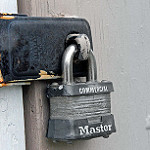
Unlocking Creativity: The Digital Millennium Copyright Act
The Digital Millennium Copyright Act (DMCA) was signed into law in 1998 under President Clinton as an attempt to update copyright law in accordance with the changing technology of the times. Part of the law, Section 1201, makes it illegal to break digital locks placed on copyrighted material – whether the intended use is legal or not. It’s the act of breaking the lock itself which is illegal. “Breaking” refers to altering an item’s code. For example, documentary filmmakers often need to break digital locks to access copyrighted works to legally incorporate them into their films. Also, an artist who may want to use a 3D printer with a material other than the materials the printer was designed to use would have to break a digital lock to do so.
Performing Arts Alliance member Fractured Atlas is working to tell Congress how Section 1201 of the DMCA hinders artists’ ability to do their work. Although the DMCA was created with the intention of protecting copyrighted work from piracy, section 1201 doesn’t distinguish between pirates and those whose plans for the copyrighted work would not be infringing. Every three years, the Library of Congress reviews petitions for exemptions to this law for people who are prevented by it from making legal uses of copyrighted works. The process is incredibly burdensome, and petitioners have to devote valuable time and resources to filing for this exemption every three years—and they have to make their case from scratch each time. Possible legislative solutions to this problem range from fixing the exemption process to eliminating it altogether.
Learn more about the DMCA:
- What Last Week’s DMCA Exemptions Mean for Artists: Part One (Fractured Atlas, 11.3.15)
- What Last Month’s DMCA Exemptions Mean for Artists: Part Two ( Fractured Atlas, 11.11.15)
- The DMCA is Broken for Filmmakers Like Me (Motherboard, 2.14.16)
(Source: Courtney Duffy (@cduffy90), Robert W. Deutsch Arts & Technology Policy Fellow at Fractured Atlas and Public Knowledge.)
Image credit: Camera Eye Photography via Flickr

